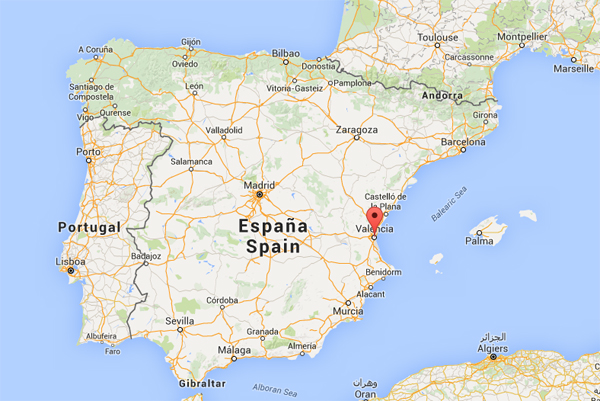Welcome to Valencia!
Valencia is the capital of the autonomous community of Valencia and the third largest city in Spain after Madrid and Barcelona, with around 800,000 inhabitants in the administrative centre.
Its urban area extends beyond the administrative city limits with a population of around 1.5 million people.
Valencia city is on the Mediterranean coast of Spain, on the banks of the Turia river, fronting the Gulf of Valencia. Its port is the 5th busiest
container port in Europe and the busiest container port on the Mediterranean Sea.
Arriving in Valencia
By Air:
Valencia airport is located at some 8 kilometers west of the city, in the nearby Manises locality. The airport serves flights to and from the main Spanish and European cities.
Valencia connects via Madrid and Barcelona to destinations all over the world.
You can get to the city either by taxi or metro.
Taxi:
The trip from the airport to the city center takes about 25 minutes, its cost is around 25 Euros.
By Metro/Tram:
You can take Metro Line 5 at the airport to the city center (train station on the corner with Colón street).
Line 5 connects with lines 2, 3 and 7. Information about metro stops, timetable and fees can be checked on www.metrovalencia.es.
Train:
There are two train stations in Valencia, next to each other, for two different types of trips: Joaquin Sorolla station and North station.
Joaquín Sorolla is the long distance line, connecting with Madrid, Barcelona, Alicante, Castellón and Albacete.
The North station serves all of the other long distance lines, plus mid and short ("cercanías") distances.
Both stations are located in the city center at 10 minutes walk to each other. RENFE offers a free trip upon presentation of the train ticket.
Public Transport in Valencia
To move around the city, Valencia offers a wide range of public transport, including metro (www.metrovalencia.es),
bus (www.emtvalencia.es), tram and a bicycle service Valenbisi (www.valenbisi.es/).
Moving by metro is a good option in Valencia city. The city is widely covered by five metro lines that run from 5:30 a.m. to 12:00 p.m.
You can check metro stops, timetable and fees on this link.
The city buses (EMT) have a wide network all over the city.
You can consult and plan your trip within the city, from a starting point to your destination, on the EMT web site.
Brief History

Valencia was founded as a Roman colony in 139 BC. Its historic centre is one of the largest in Spain.
Valencia was founded as a Roman colony in 139 BC. Its historic centre is one of the largest in Spain. The heritage of ancient monuments, views and cultural
attractions makes Valencia one of the country's most popular tourist destinations. Major monuments include Valencia Cathedral,
the Torres de Serranos, the Torres de Quart, the Llotja de la Seda (declared a World Heritage Site by UNESCO in 1996), and the Ciutat de les Arts i les Ciències
(City of Arts and Sciences), a cultural and architectural complex designed by Santiago Calatrava and Félix Candela.
Valencia Today

The Museu de Belles Arts de València houses a large collection of paintings from the 14th to the 18th centuries, including works by Velázquez,
El Greco, and Goya, as well as an important series of engravings by Piranesi.
The Institut Valencià d'Art Modern (Valencian Institute of Modern Art, IVAM) houses both permanent collections and temporary exhibitions of contemporary art and photography.

